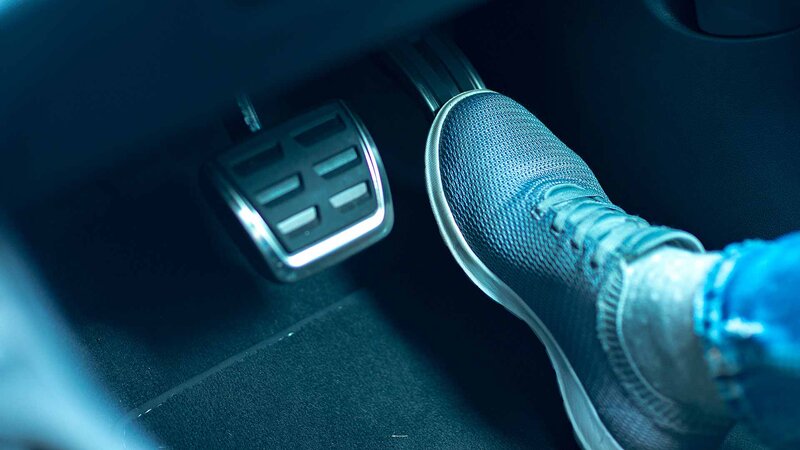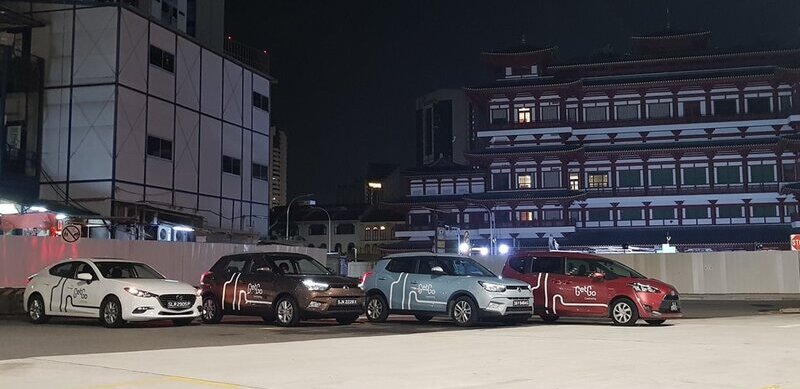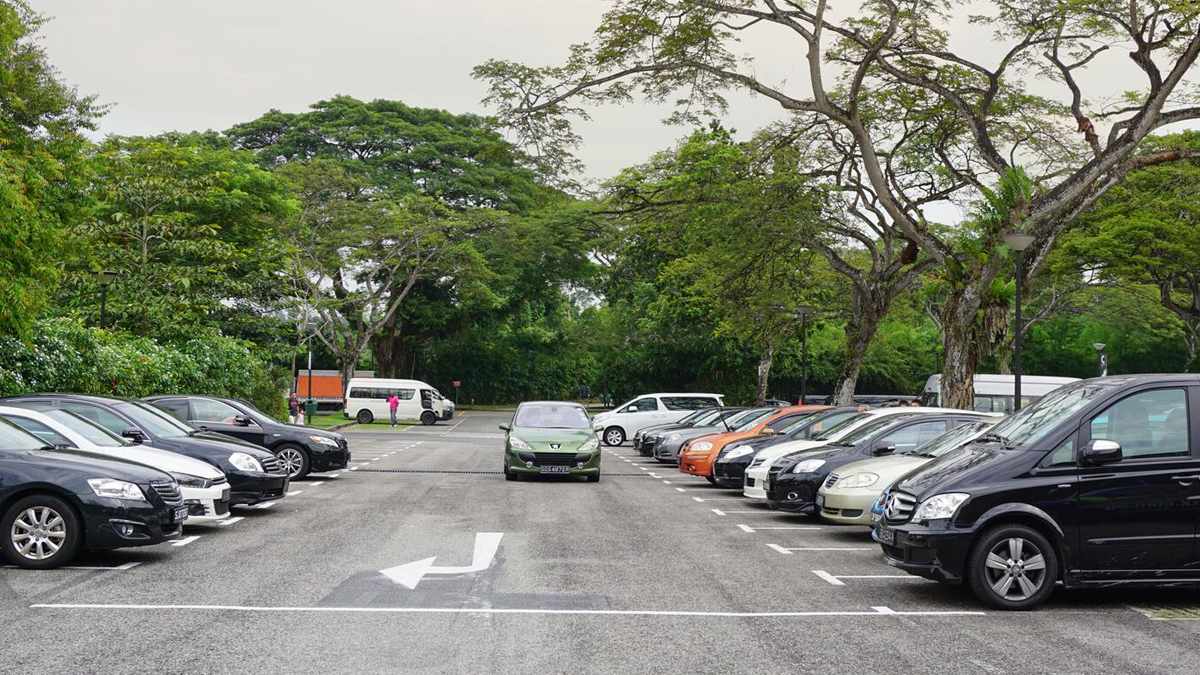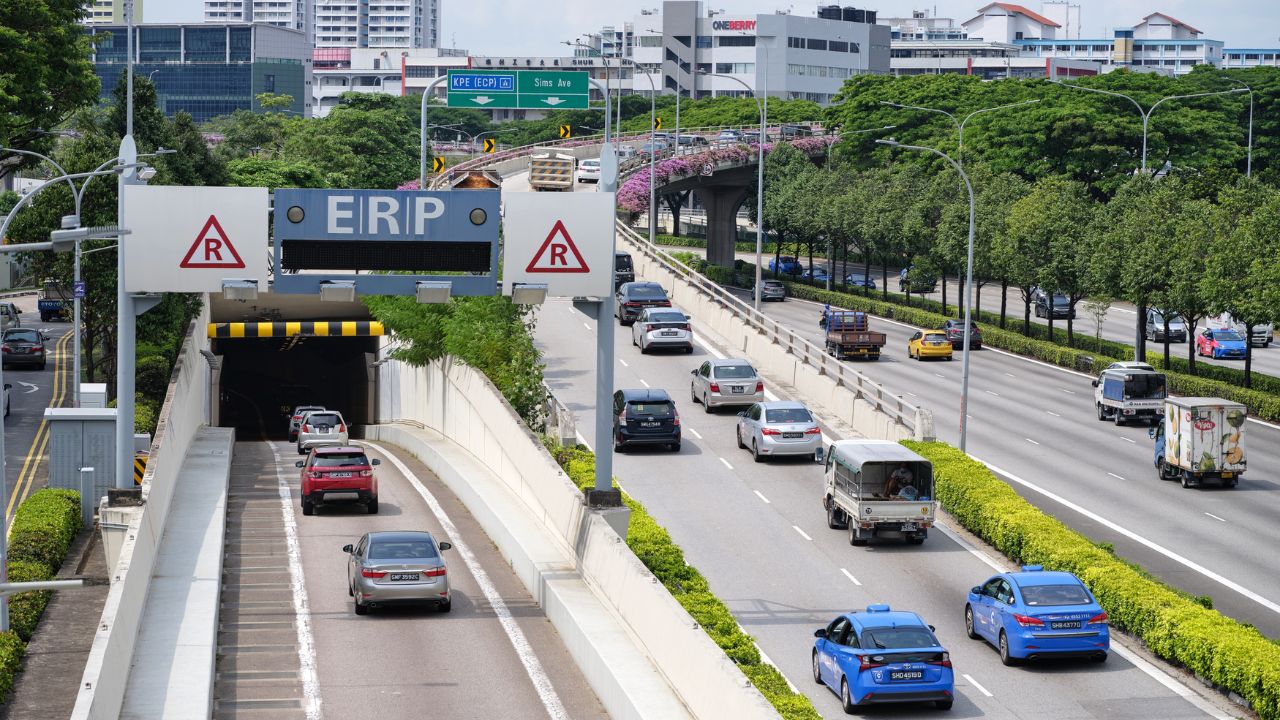The complete guide to whether you should drive a petrol, hybrid or an electric car
10/03/2022
10.7 min read

Who would’ve thought that we’d someday have cars that run on electricity and that we’d be standing at a crossroads trying to choose between a petrol and an electric car? While all of us drivers in Singapore will be required by law to go electric by 2040 whether we want it or not, we still have some time and luxury to choose.
So, if you’re wondering whether it’s better to drive a petrol, hybrid or an electric car, you’ve come to the right place.
Key differences between a petrol, hybrid and an electric car
Here’s a quick overview of what we’ll be covering in this blog post.
| Petrol | Hybrid | Fully electric | |
|---|---|---|---|
| Engine(s) | ICE | ICE and electric motor | Electric motor |
| Convenience | Convenient due to the wide availability of petrol stations |
Convenient due to having two power sources |
Less convenient when charging stations are not easily accessible |
| Range | Currently the longest | Longer than fully electric |
Shorter |
| Maintenance | Frequent | Older ICEs need more servicing |
Less frequent |
| Electric car rebates and incentives |
Not applicable | Not eligible for all benefits |
Eligible |
| Effects on the environment |
Not eco-friendly | More eco-friendly | Most eco-friendly |
We’ll be breaking down everything that you need to know about this topic. Ready? Let’s get down to business!
How does a petrol car work?
To understand how hybrid cars and fully electric vehicles are different from petrol cars, we first need to know how the latter work. Petrol cars have something called the internal combustion engine (ICE) which is basically the heart of a car. This is where heat energy from burning fuel is converted into torque to move your car. The roaring noise that you hear from under your car’s hood? That’s partly due to the thousands of tiny ignitions that happen every minute within the engine.
The charm of petrol cars
We’ve driven petrol cars for over a hundred years now, so it’s not surprising that they’re a better, more convenient option for so many of us. Just look at the sheer number of petrol stations or car service centres around, for instance. There’s no need to worry about where to refuel or service.
Petrol car prices are also relatively much cheaper than their electric counterparts.
But petrol cars aren’t perfect, are they?
Spot on. As convenient as they are, conventional cars still have many downsides. For one, they’re not eco-friendly because of their carbon dioxide emissions (the infamous greenhouse gas responsible for global warming). Sustainability is a major concern too because petrol comes from fossil fuels which is a non-renewable resource that we’ll sooner or later run out of.
Not only that, petrol prices are prone to fluctuations. It was reported just a few days ago that the popular 95-octane petrol in Singapore has crossed the $3 mark following global conflicts.
Hybrid cars
Did you know that the world’s first hybrid car was invented in 1899? Known as the System Lohner-Porsche Mixte, the car was fitted with a gasoline engine to power an electric motor that drove the car’s front wheels.
123 years later, hybrid cars still work on the same premises. There are three main types of hybrid cars — the plug-in hybrid car, the mild hybrid car and the full hybrid car.
Plug-in hybrid
Plug-in hybrids (or PHEVs) are equipped with both an electric motor and an ICE so that they don’t rely solely on electric power. The battery in a PHEV needs to be charged through an external power source, hence the name ‘plug-in’. But unlike the other two hybrids, a PHEV comes with a larger onboard battery pack — this gives the car an added advantage because its electric-only range is much higher compared with other types of hybrids. Don’t worry if you forget to charge though — PHEVs use the regenerative braking system, so they can also self-charge.
Hold on, what’s regenerative braking?

(Photo: Motoring Electric)
Let’s get back to some basics again. Older petrol cars have something called the disc brake, which in the simplest terms, helps create friction through the clamping of the disc by a pair of brake pads. Every time you hit the brake pedal, this mechanism swings into action and slows down your car.
The only issue with this traditional braking system is that the friction creates thermal energy (simply known as heat) and this causes a number of problems including the loss and waste of heat energy to the surroundings.
Regenerative braking in hybrid cars works by capturing this heat energy to recharge the onboard battery pack. This is where the electric motor gets its juice from.
Mild hybrid
Like all hybrids, mild hybrids are fitted with both an electric motor and an ICE but their onboard battery packs are much smaller. This means that the batteries can supply just enough power to assist the engine or the ancillary electrical systems, and not to drive the wheels. Another key difference is that both power sources can’t be used independently of one another.
Most mild hybrids use a starter-generator powered by either a 48, 24 or 12-volt battery pack. The starter-generator allows energy to be regained through regenerative braking and stores it in the battery.
Mild hybrids are usually the cheaper way to own a hybrid car.
Full hybrids
The most common hybrids on Singapore roads, the full or parallel hybrids use both an electric motor and an ICE either independently or simultaneously. But unlike the PHEV, the full hybrid’s smaller battery pack holds less amounts of electric charge and is more suitable for shorter city drives. The smaller battery size also means that it can be fully charged quicker.
And even if the battery goes flat, you can still drive completely on petrol-mode — so range anxiety is usually not common among full hybrid drivers.
Why should you switch to hybrid?
Hybrids are more eco-friendly than petrol cars
The most striking advantage of hybrids is that they’re more environmentally friendly. Because hybrids are designed to consume less fuel, they produce less emissions too. This also means that they can offer the comfort of a regular petrol engine yet with better energy efficiency and petrol mileage.
Hybrids are cost-effective
Hybrids can mainly help you save on petrol expenses because they require less fuel when the electric drivetrain kicks in at low to moderate speeds.
Hybrids are quieter than petrol cars
Unless you drive faster or push your car’s ICE to work harder, hybrids tend to be a lot quieter than regular petrol cars because there’s not much fuel that needs to be burnt.
Do hybrids have any disadvantages?
While there are many benefits to driving hybrid cars, they definitely do have a few drawbacks.
Hybrids are heavy
Hybrids are known to be heavier as they carry two power sources. This is why they’re generally slower than petrol or fully electric cars. And this is the reason why they’re ideal for city driving, especially in traffic-heavy areas where you can’t speed.
You may feel warm in a hybrid
If you’ve ever been in a hybrid car before, you’d probably have experienced this.
Hybrids save fuel by using electric charge as much as possible, but this is only the case when your car has enough charge. In the event that it doesn’t, the engine and aircon compressor will shut down when you’re stationary so that your car doesn’t use up as much fuel.
In most cases, even when there’s enough charge, only the blowers will work — so, expect some sweating.
Fully electric vehicles
Why is it called a fully electric vehicle and not just an electric vehicle?
We’re glad you asked. Fully electric vehicles are propelled solely by an electric motor, unlike hybrid cars which have two different power sources. But hybrids fall under the electric vehicle category too as it’s also fitted with an electric motor, so we want to be careful not to confuse them with fully electric cars.
That said, we’ll stick to calling fully electric cars ‘EVs’ from now on.
Want to know how to charge an EV? Check out our full guide on charging an EV and where you can charge them in Singapore (including some free charging stations).
What are the perks of driving an EV?
Recharging is much cheaper than refuelling
While both petrol and electricity prices are prone to fluctuations, electricity is still cheaper than petrol in Singapore. Currently, AC charging costs about $0.43/kWh whereas DC charging goes up to about $0.52/kWh.
So, to fully recharge an EV like the Hyundai Kona Electric which has a battery capacity of 64kWh, you’d only have to pay about $27.52 for AC charging and $33.30 for DC charging.
On the other hand, topping up petrol from an empty tank to full tank can easily cost you about $100 every time you refuel. 🤯
Lower maintenance costs

(Photo: Hyundai Singapore)
An EV doesn’t have as many parts as a petrol car, thanks to the absence of an ICE along with all its tiny, complicated parts. This takes away the need for regular servicing. The only thing that you may need to change is the battery pack, that too only if necessary.
You get rebates and incentives
Did you know that there are rebates and incentives like the Vehicular Emissions Scheme (VES) and the EV Early Adoption Initiative (EEAI) that’ll help you save up to $45,000 when you buy a qualifying electric vehicle in Singapore? And that’s not all — the Additional Registration Fee (ARF) for some cars is down from $5,000 to zero from this year onwards.
Some of the benefits under these rebates apply to hybrid cars as well.
EVs are easy on the planet
Because no petrol needs to be burnt to make an EV move, it doesn’t cause any harmful tailpipe emissions. That said, how we generate our electricity still plays a huge role in how clean EVs are, but they’re no doubt the cleanest option when compared with other types of cars.
EVs are the quietest
Believe it or not, EVs are so quiet that you may not even hear one passing by. Frankly, this can be seen as both a blessing and a curse because while we’d definitely love quieter roads, cyclists and pedestrians may not notice an approaching electric car. This is why places like Europe make it mandatory for EVs to be fitted with a noise emitter.
A few downsides to electric cars
Range
Range is one of the key challenges that needs to be addressed before EVs can truly go mainstream in Singapore. A fully charged electric car can take you as far as 342 kilometres which is the average distance driven by a Singaporean in a week — so driving and recharging on the island may not be that big a concern. That’s because public charging stations are fast growing in numbers. Not only that, newer EV models have improved range.
The real challenge lies in figuring out recharging for those who frequently drive up to Malaysia, where charging stations are yet to be widely accessible.
Charging time
Unlike refuelling a petrol car which can be done in under five minutes, recharging an EV can normally take up to 30 minutes before you can travel another 100 kilometres. But on the flipside, you can do your grocery shopping or grab a meal during the wait.
Should you drive a petrol, hybrid or a fully electric car?
When deciding which car to drive, it’s important to weigh all the pros and cons and check-in with your priorities. Will you drive to Malaysia often when the borders finally reopen? Do you want to cut down on fuel and servicing costs and opt for something that’s kinder to the environment? These are some of the factors that need to be taken into consideration.
Or do you prefer driving a variety of cars?

The good news is that you no longer have to tie yourself down to driving just one car or to huge financial commitments that come with car ownership. With carsharing options becoming more and more available, the freedom to drive different types of cars is all yours.
Every time you drive a GetGo car, whether fuel or electric, you don’t need to worry about big things like COE that’s always on the rise or insurance. All you have to do is pay for what you use and we’ll take care of the rest.
Fuelling your road trip excitement? Download GetGo now and book a car within minutes for some awesome adventures ahead!
Here’s to a memorable drive!
Luna 🥰
Trending articles
5
What's New

loop on our
latest updates,
promos, and weekly news.
The GetGo Blog
Get our latest updates,
promotions and weekly news.













